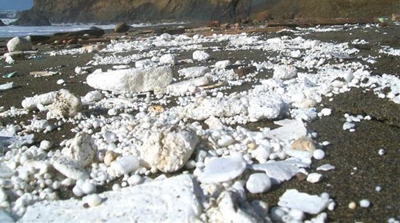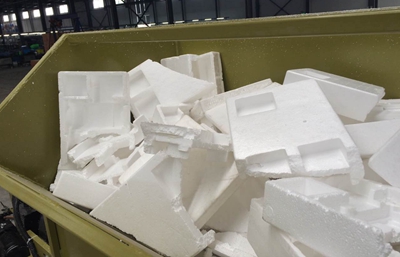Greenmax Machines for Waste Styrofoam Recycling
Styrofoam have pollution on the environment if not recycled on time. Now Greenmax Styrofoam compactor could solve Styrofoam pollution problem. The scattered waste Styrofoam could be compacted into blocks, and the dense compression ratio could reflect the compacting effect.

Floating refuse is mainly the expanded polystyrene foam sheets, plastic bags and plastic bottles. Large pieces of floating debris and large blocks of average number is 30/km. The average number of blocks and pieces of floating garbage is 2206/sq km with an average density of 20 kg/km2. Styrofoam is the largest number of garbage, which account for 46%. In a word, a total of 91% of floating refuse is from land and 9 % is from maritime activities.

Mainly submarine garbage bags and plastic bottles, and the average number is 720/km, with an average density of 100 kg/km2. The largest number is plastic garbage, accounting for 84%.

The beach garbage mainly is plastic bags, expanded polystyrene foam sheet and plastic bottles. The average number is 50,142/km, with an average density of 3119 kg/km2. Plastic waste (not including foam) is the largest number, accounting for 22%. Plastic categories account for 71% of beach litter. 86% of the beach trash is from land, and 14% comes from offshore activities.

From the above, it is easy to know so much waste Styrofoam are thrown into the marine, and pollution problem is serious. Thus, Styrofoam recycling task is in need. Waste Styrofoam can not only be compacted but also can melted down to blocks. Now Styrofoam recycling have formed a perfect recycling system worldwide. Meanwhile, waste Styrofoam could be pelletized and made into other products. So waste Styrofoam buyers is more and more. In addition, Styrofoam recycling machines have also been produced in a lot of countries.
